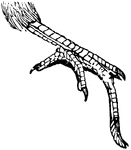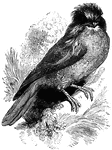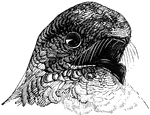Clipart tagged: ‘sucker’

Chrysaora
"In the sub-order Rhizostomae the edges of the oral opening use together at an early age and leave several…

Remora Fish
A genus of fished included in the Goby family, and of which the common remora or sucking fish, is the…

Foot of a Goat-Sucker
The foot of a goat-sucker, with a distinctively longer middle toe, believed to be used for either grasping…

Gold River Goat-Sucker
A large bird, averaging about twenty inches in length when full-grown. It is native to Australia.

Head of a Goat-Sucker
Head of the goat-sucker. It bears some resemblence to an owl, with a large head and eyes, as well as…

Hand and sucker
"The 'sucker' consists of a circular piece of thick leather with a string attached to its middle. Being…

European lamprey
"The color is yellowish marked with brown. Like the sharks and rays is it without an air bladder; to…

Horse Leech
The horse leech, similar to the medicinal leech, feeds chiefly on earthworms and on other leeches.

Lumpfish
"It is of thick, massive form, and often weighs as much as six or seven pounds; it is of a purplish-black…

Lumpfish
"The Lump Fish, or Sucker, is named from the clumsiness of its form. The back is arched and sharp, the…

Medicinal Leech
The medicinal leech is a leech used in bloodletting. It lives in fresh water, and is common in Germany,…
Remora
"About a foot long, and is provided with a pwerful sucker on the top of its head, by which it attackes…

Remora
"The Remora, the sucking-fish, or sucker. By means of the suctorial disk, a transformation of the spinous…

Rhizostomae
"In the sub-order Rhizostomae the edges of the oral opening use together at an early age and leave several…
Snailfish
Liparis lineata. A fish of the genus Liparis; so called from their soft unctuous feel, and their habit…

Snailfish - Sucker Between the Pectoral Fins
Liparis lineata. A fish of the genus Liparis; so called from their soft unctuous feel, and their habit…

Sucker
A genus of soft-rayed fishes of the carp family, having the mouth usually protractile, with thick and…

Hair Lip Suckers
A fish with a brownish color above, the sides and belly silvery, the lower fins tinged with orange.
